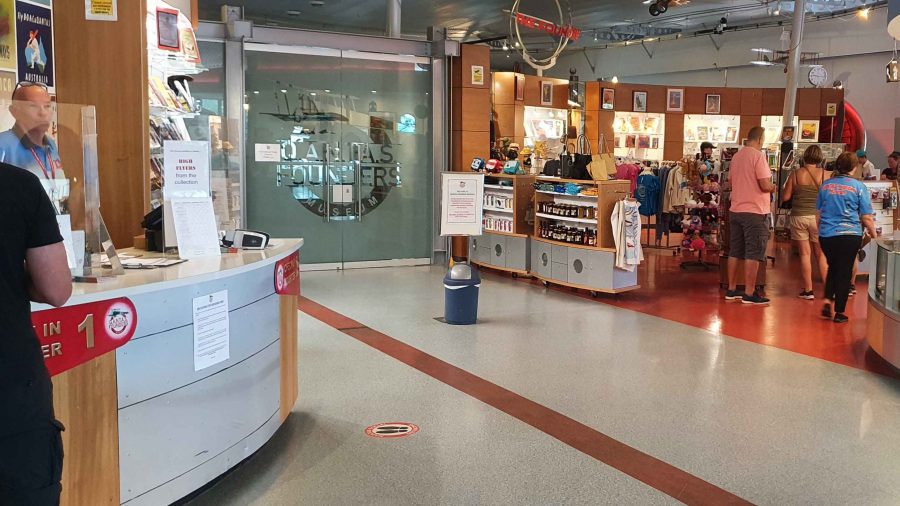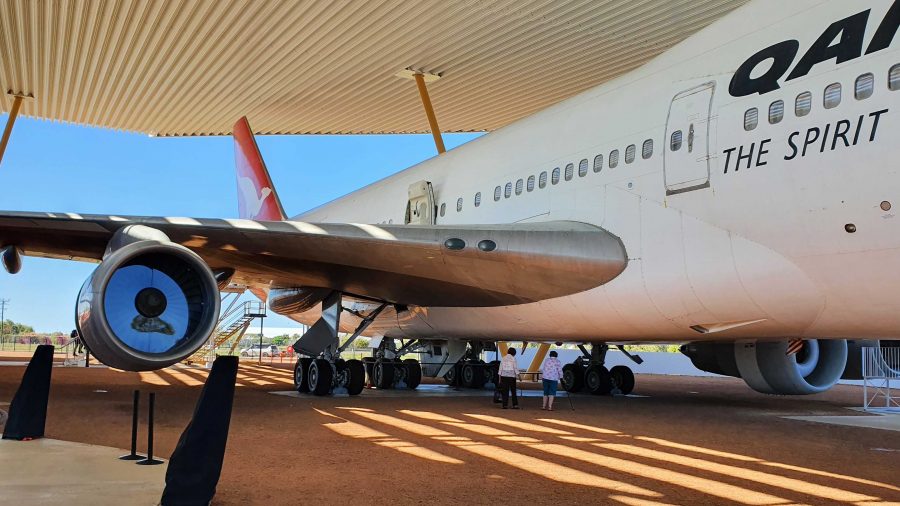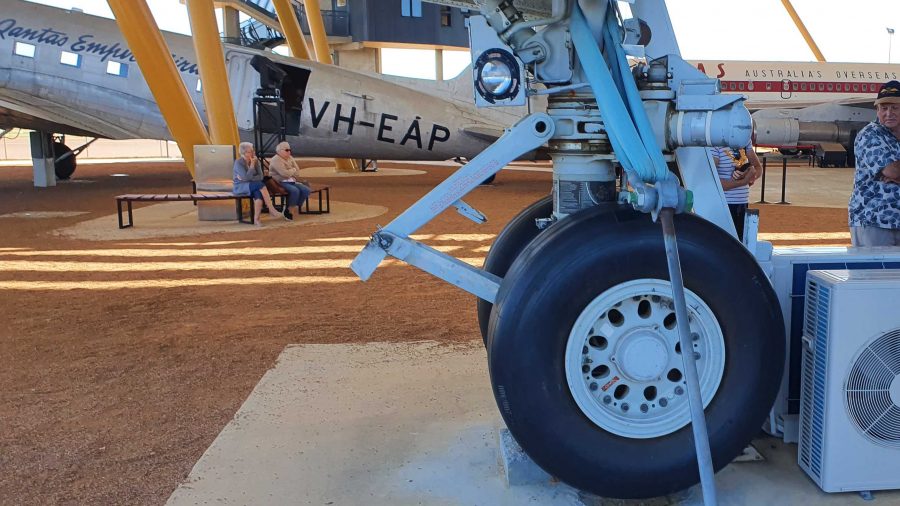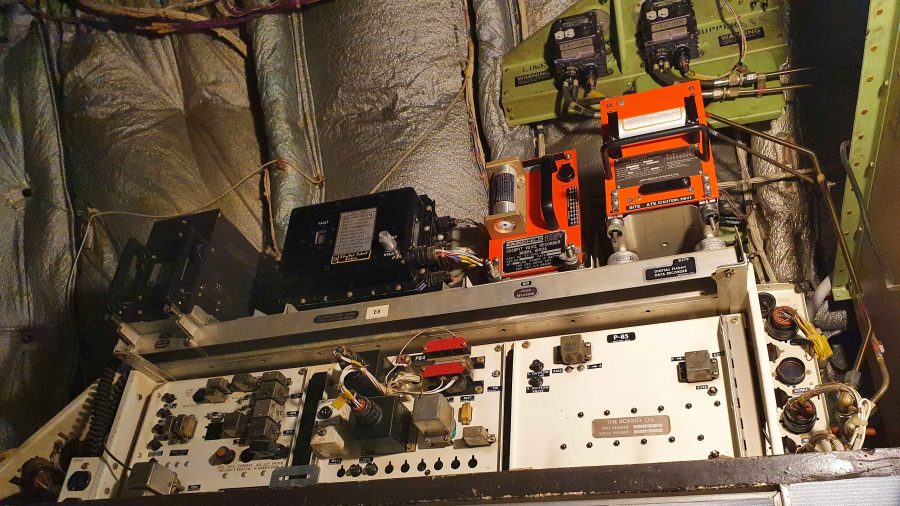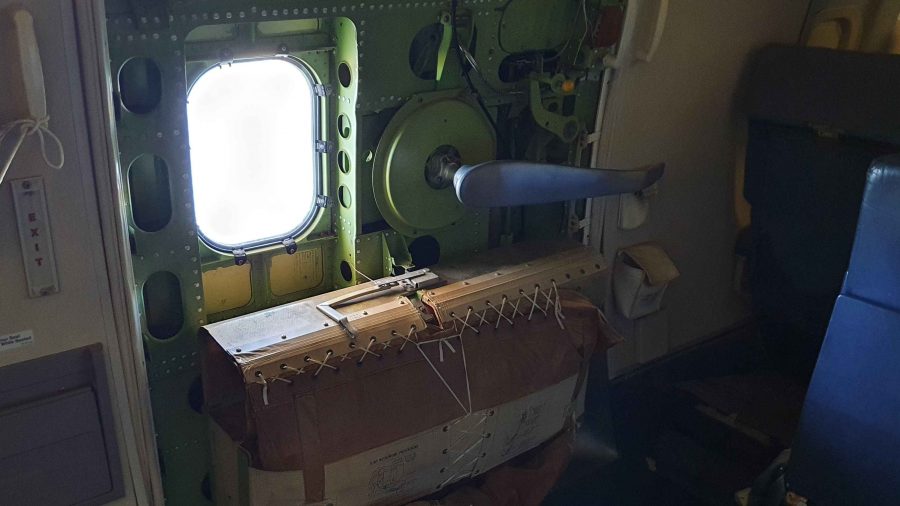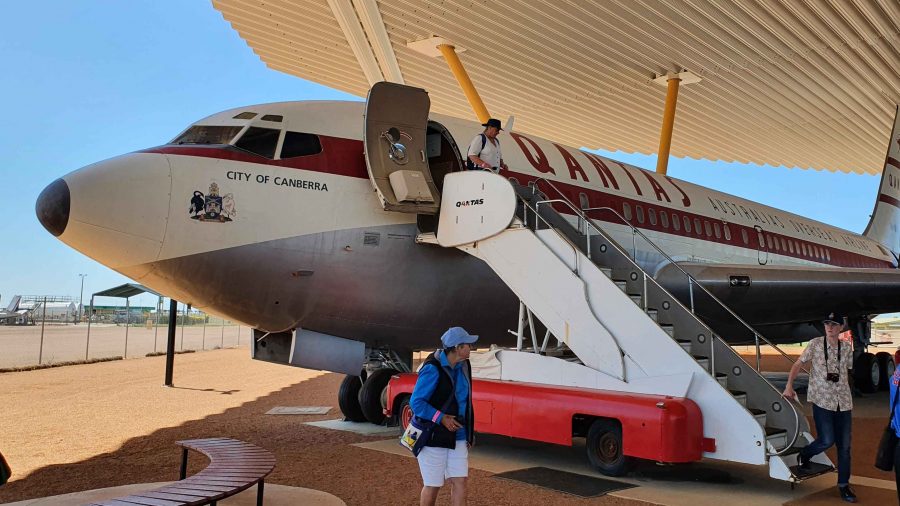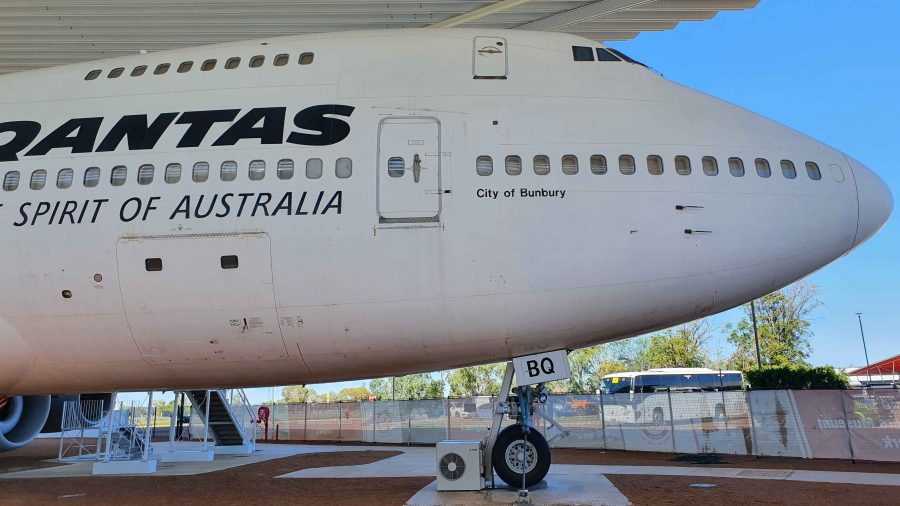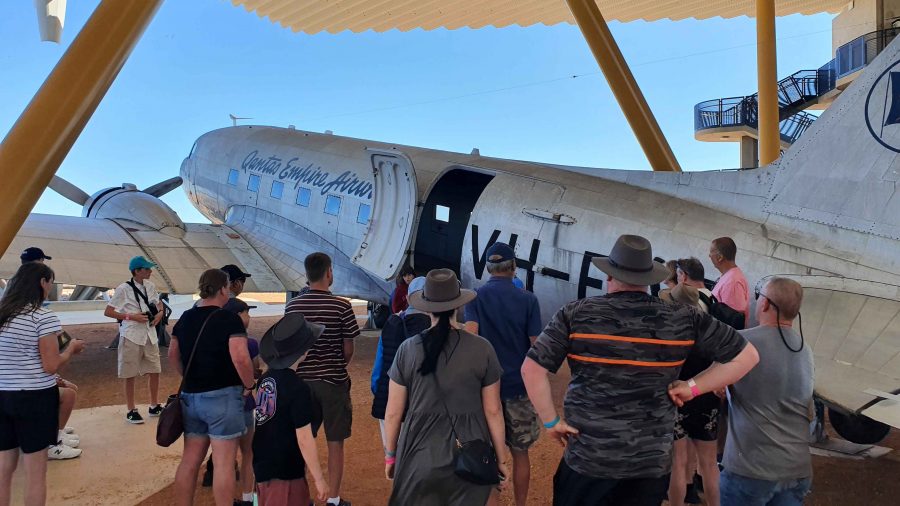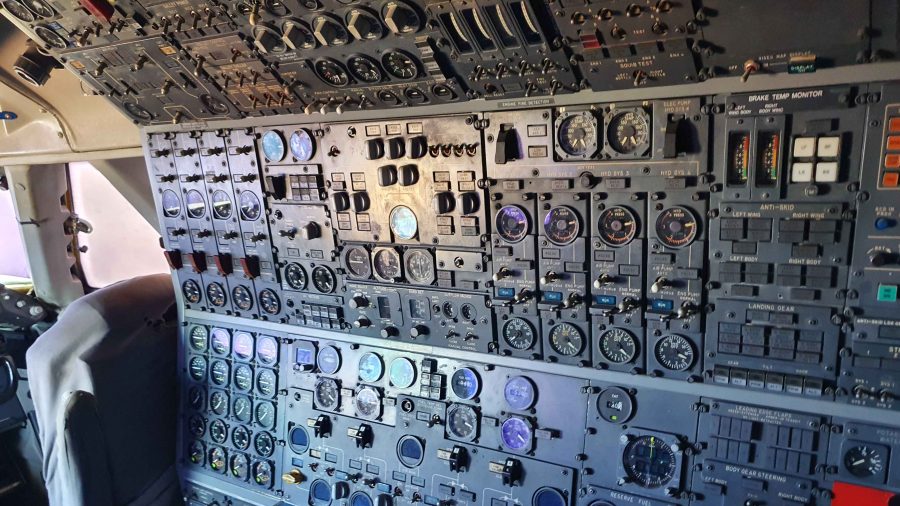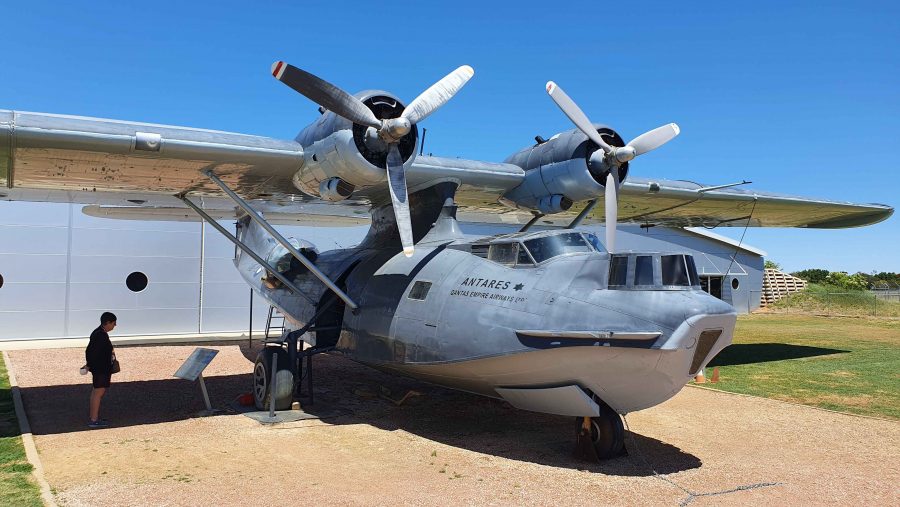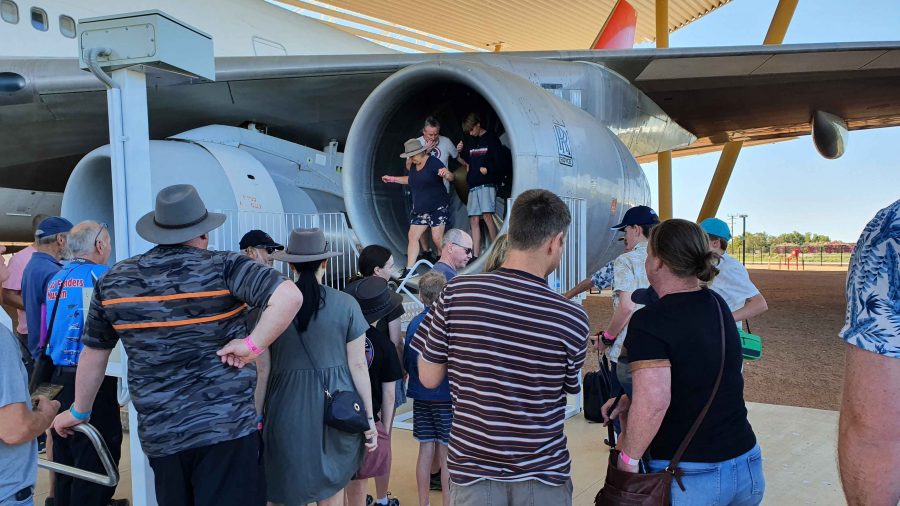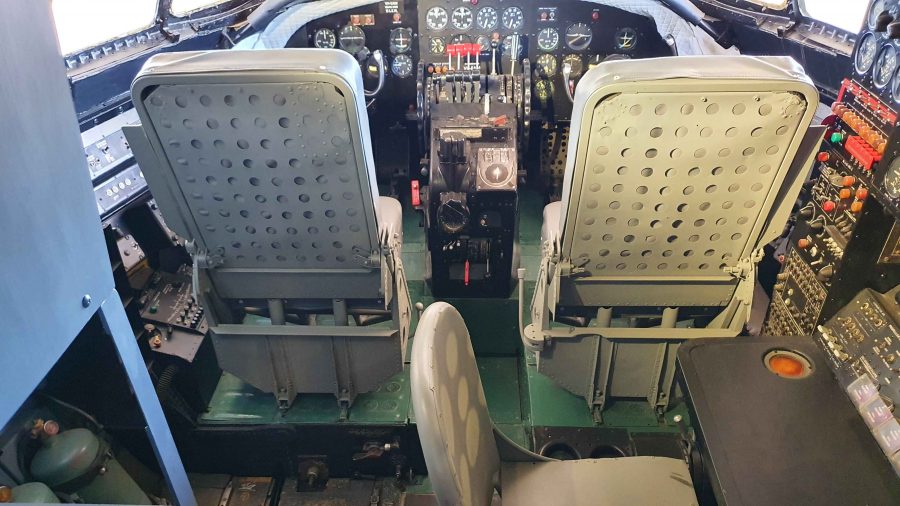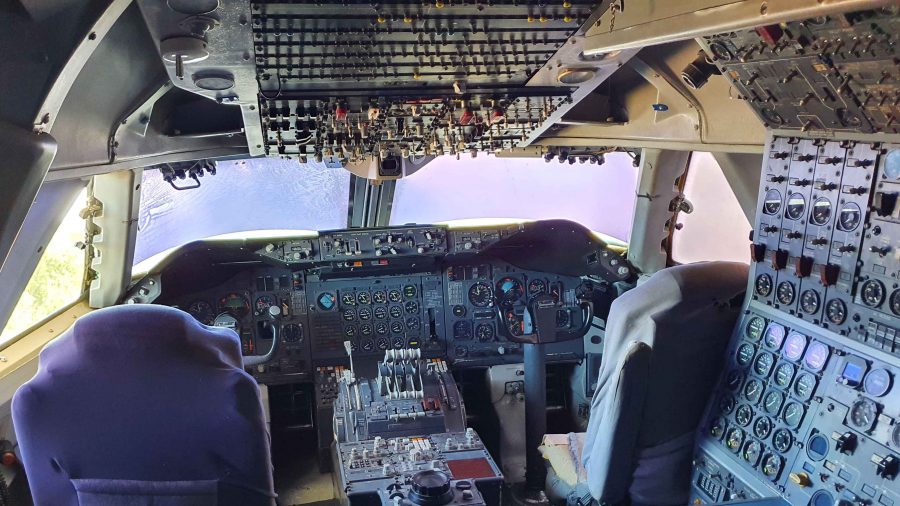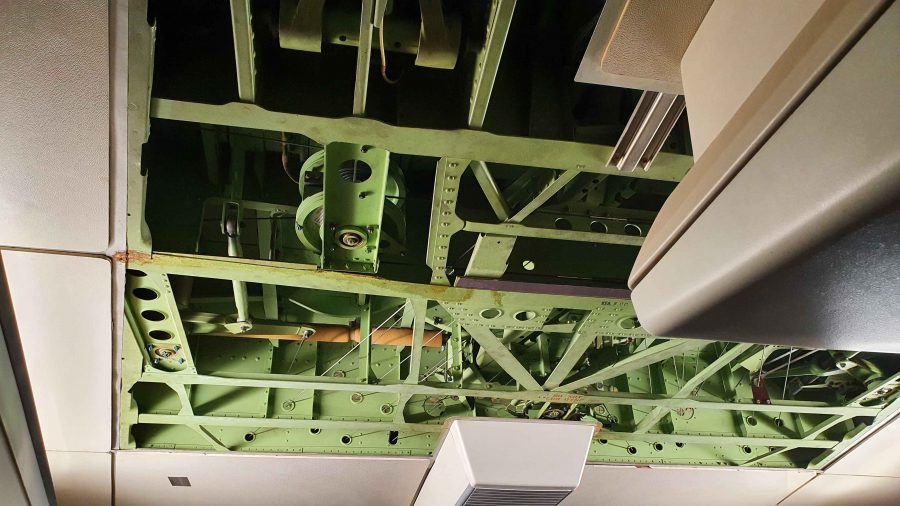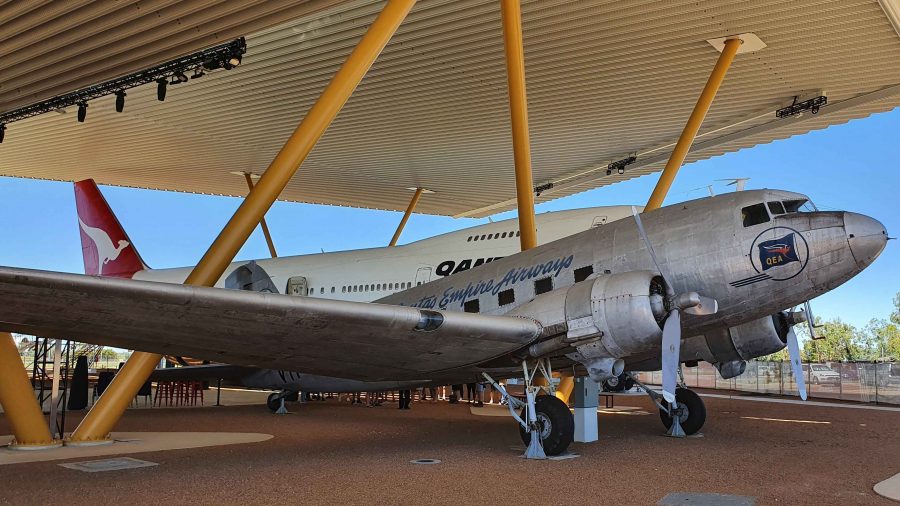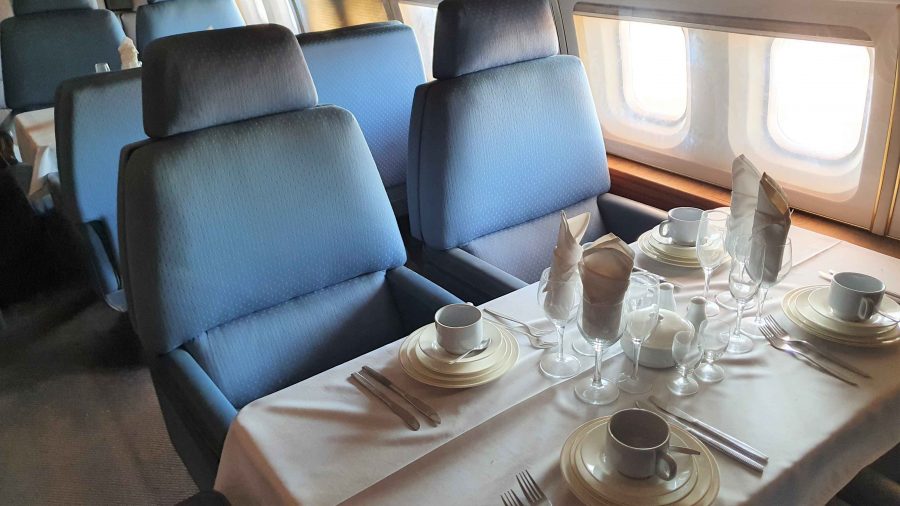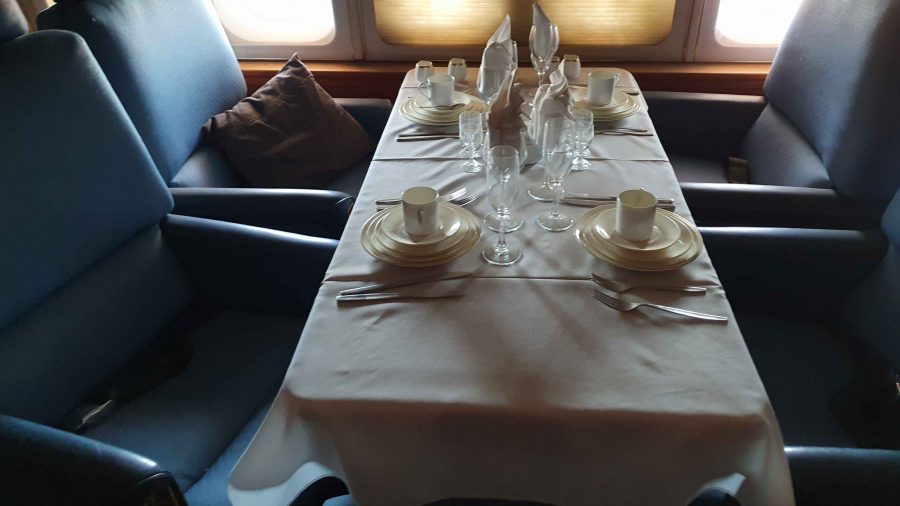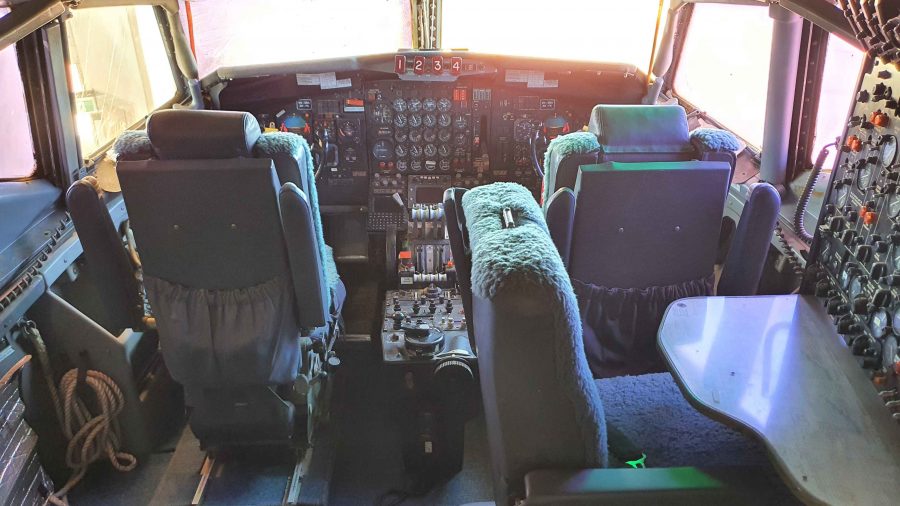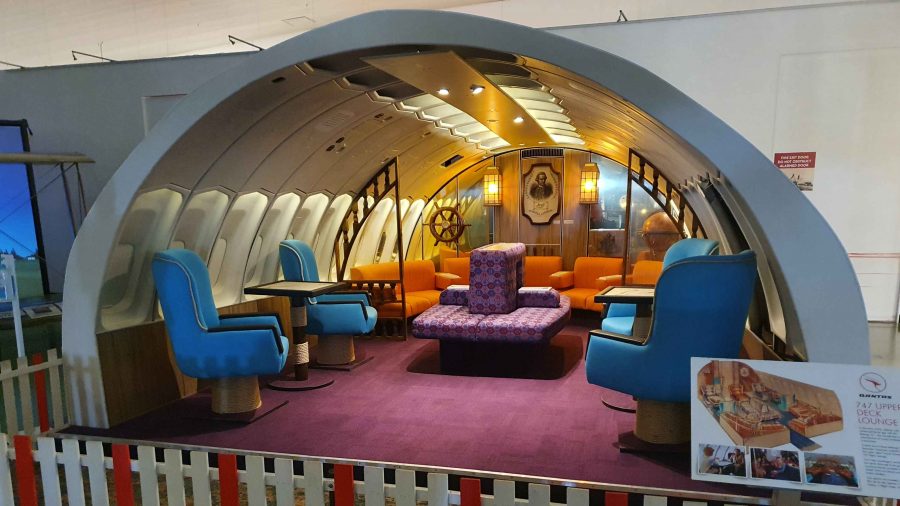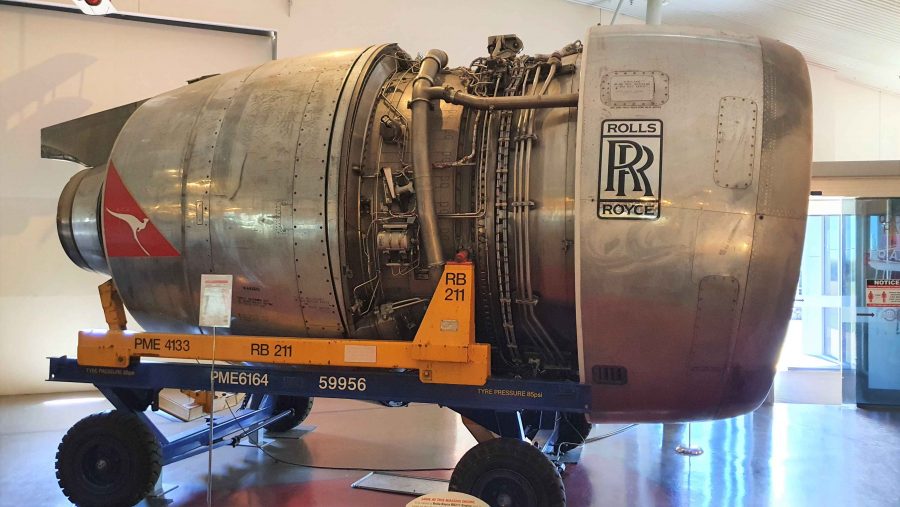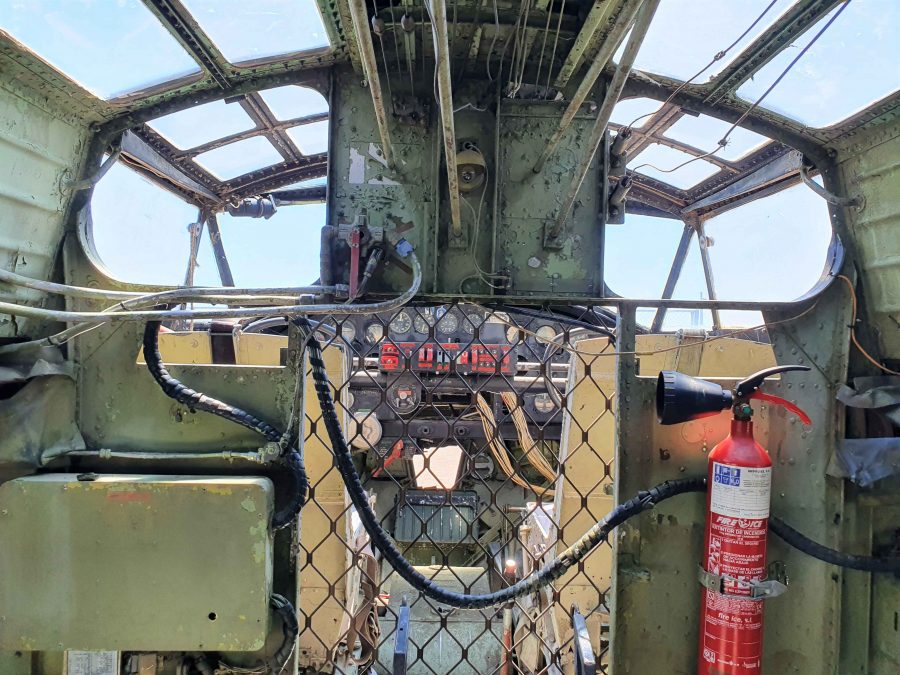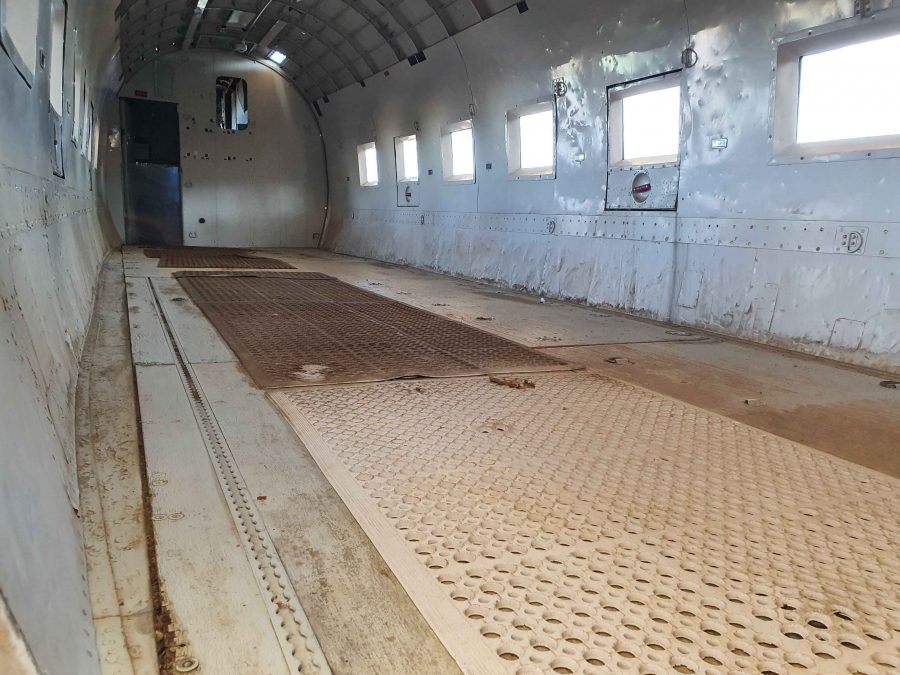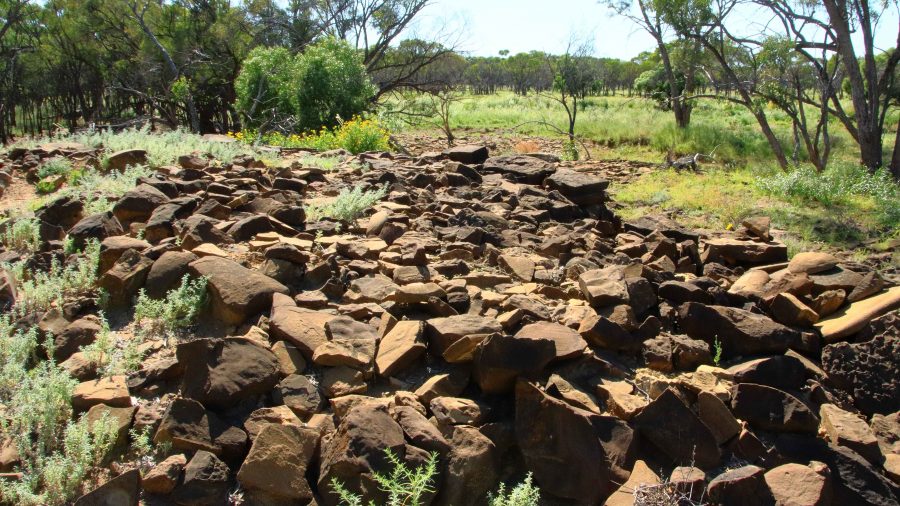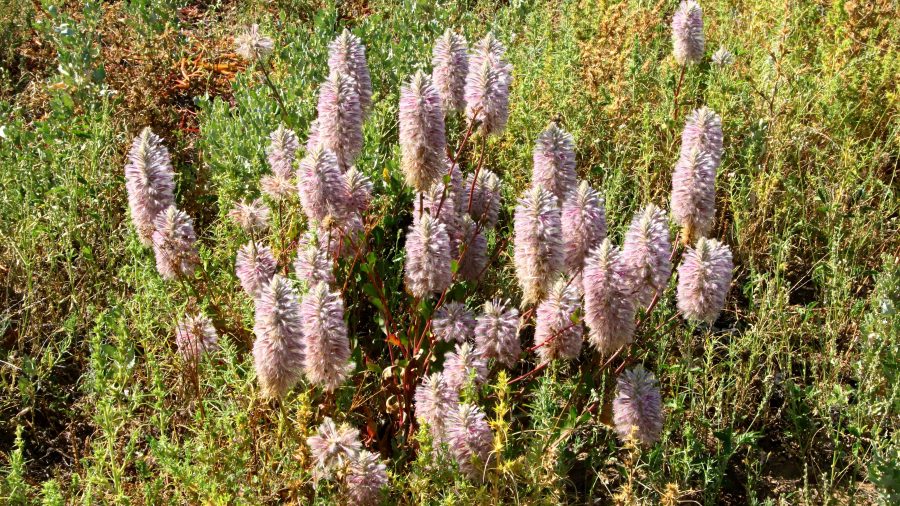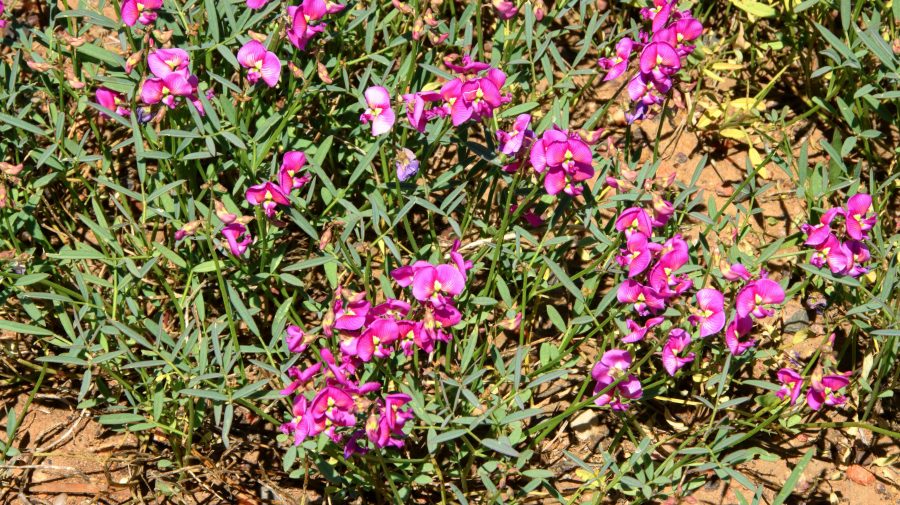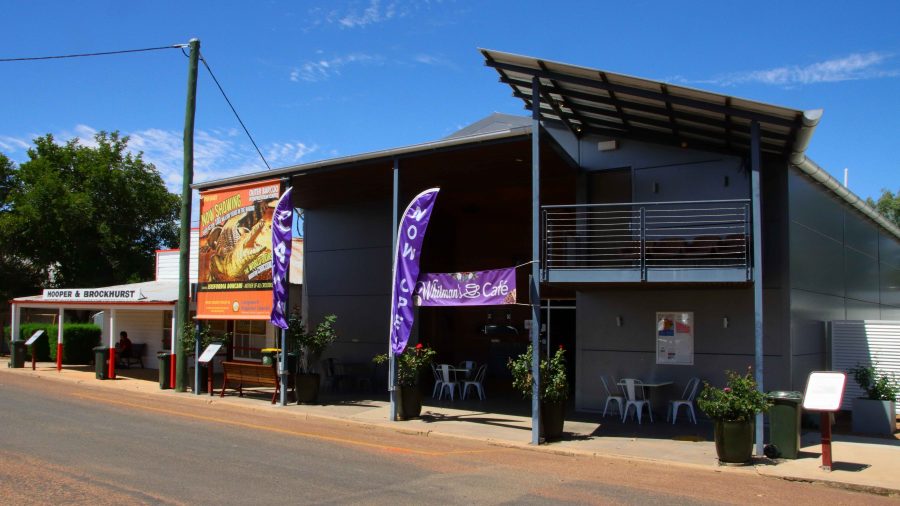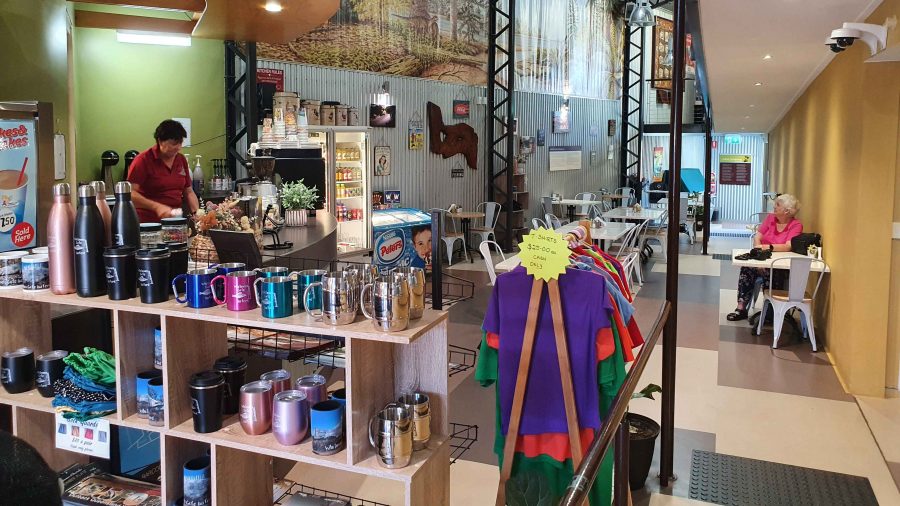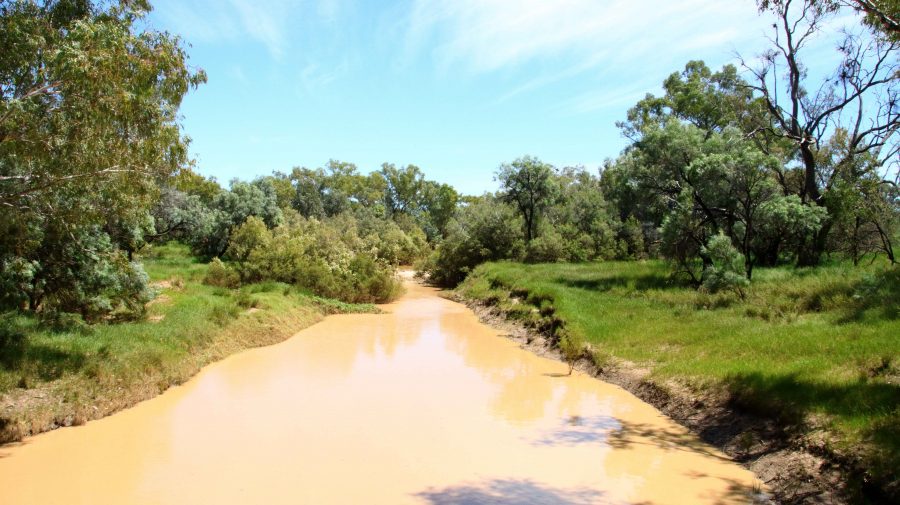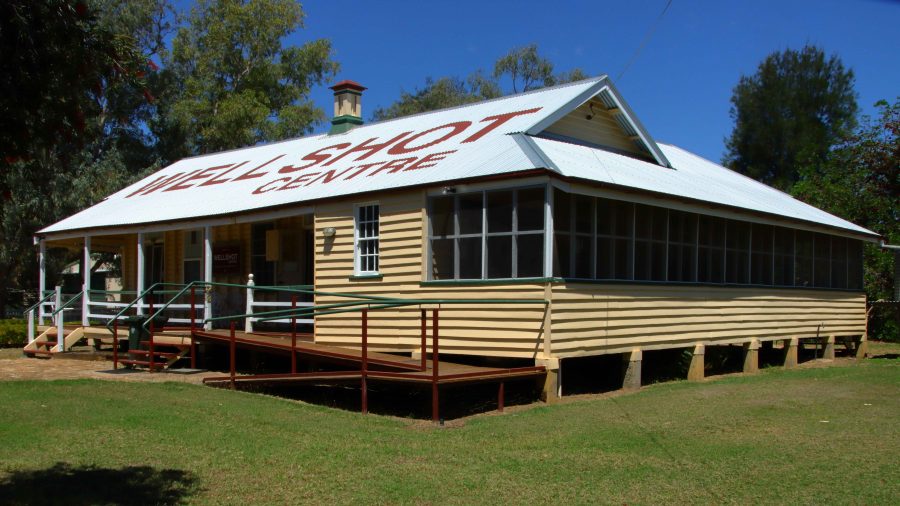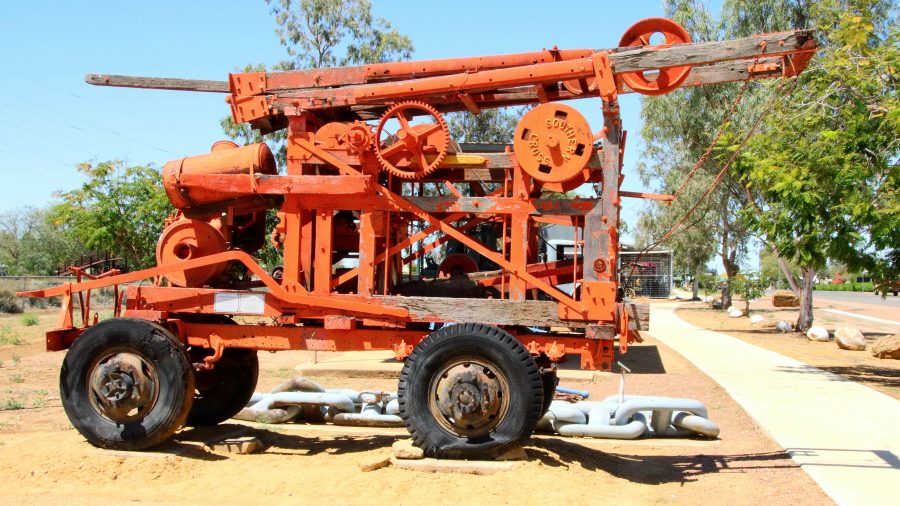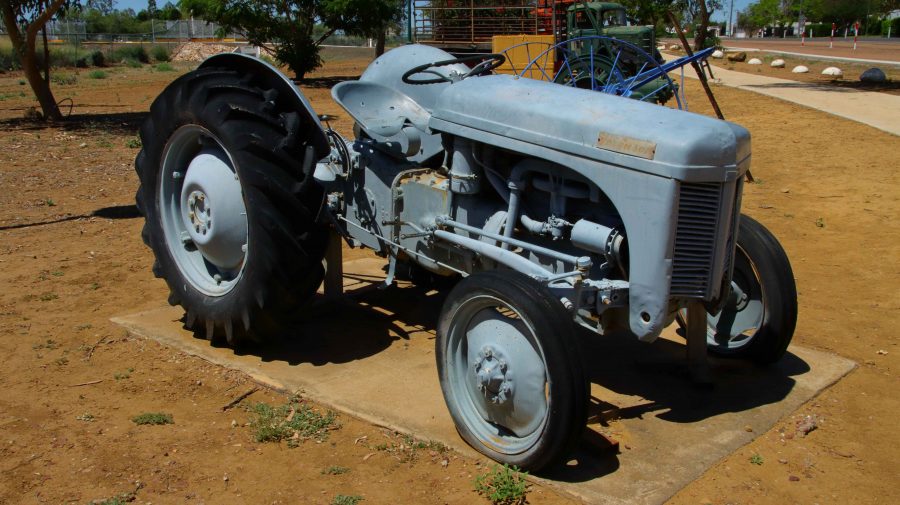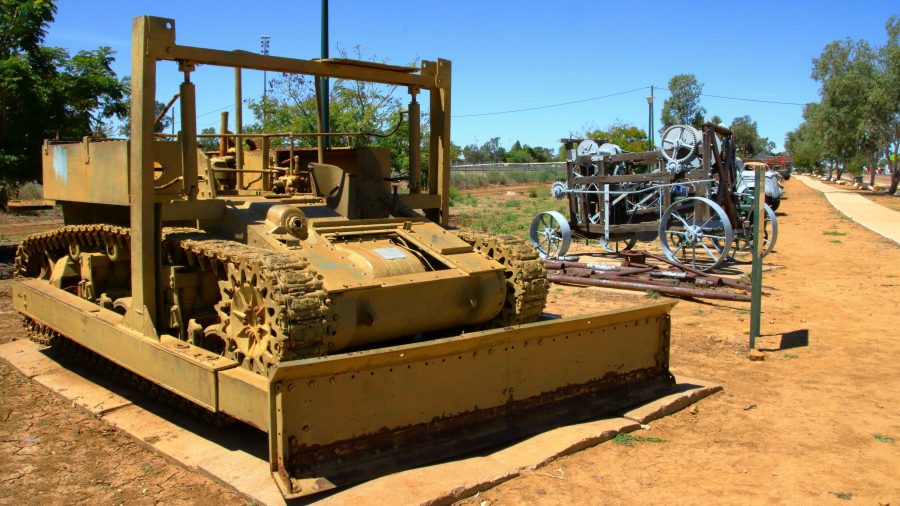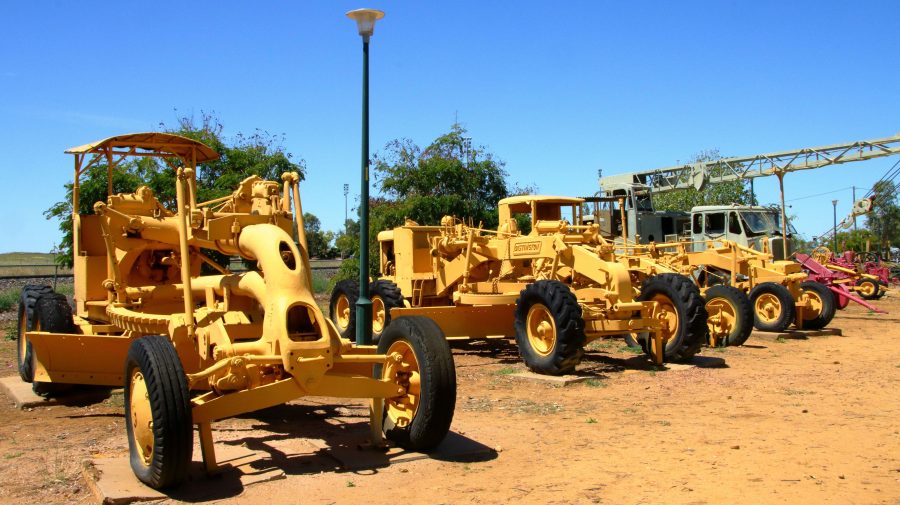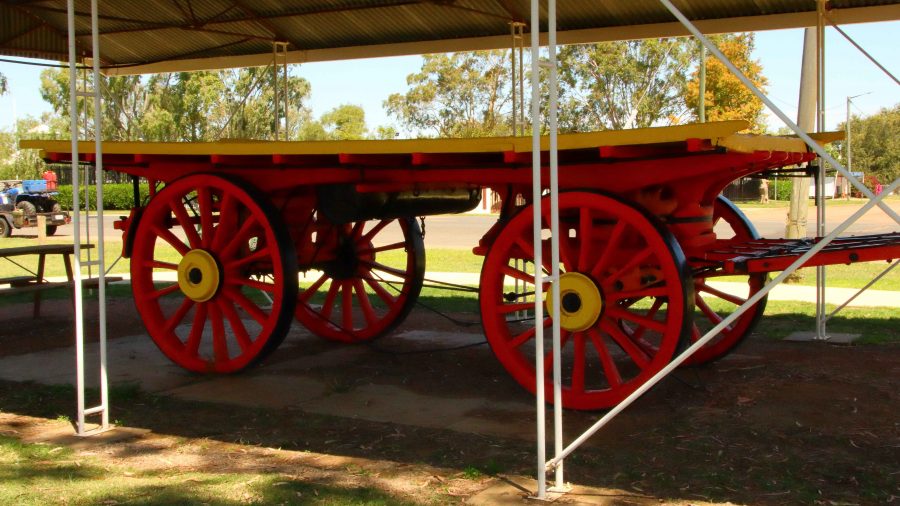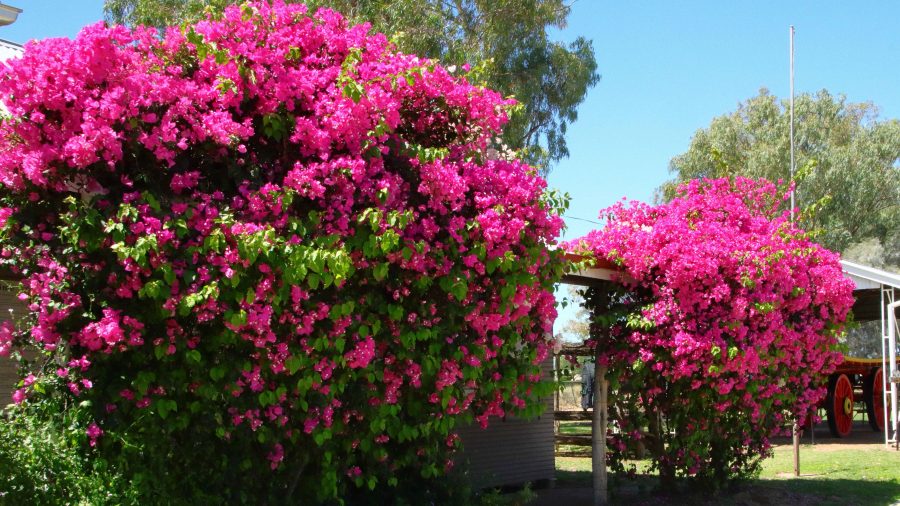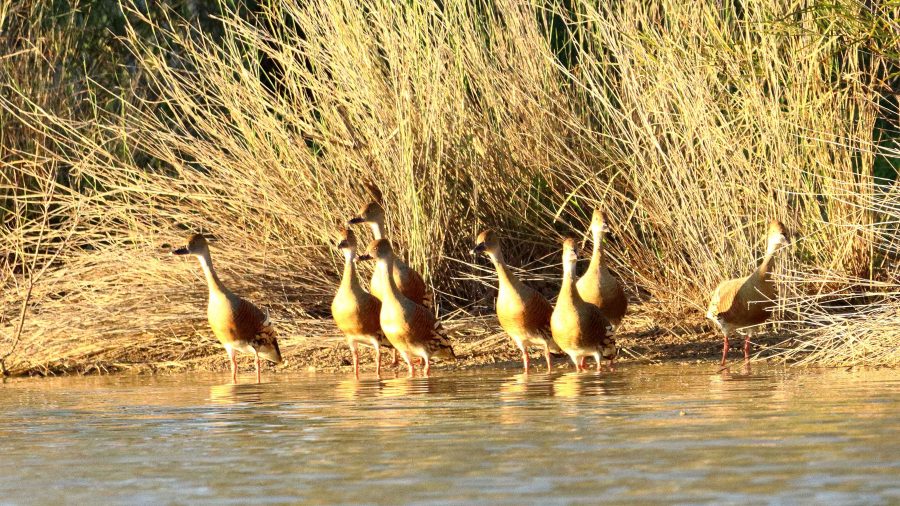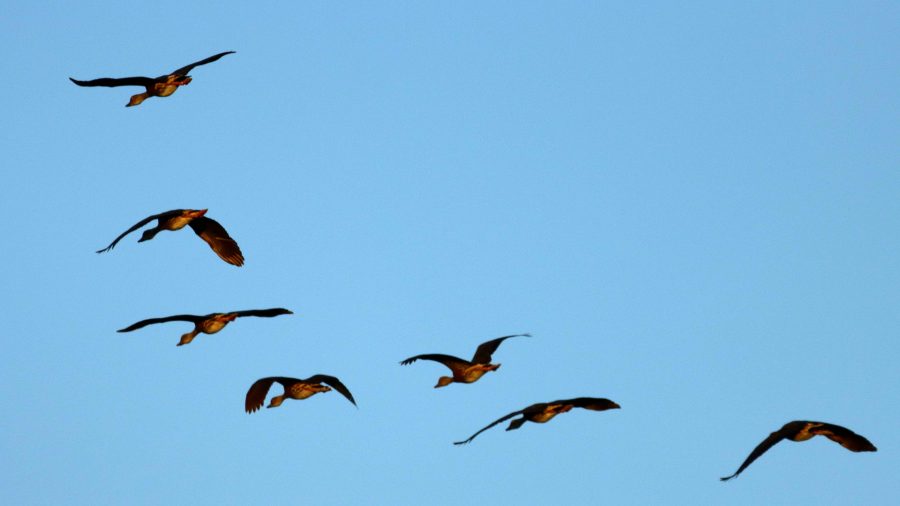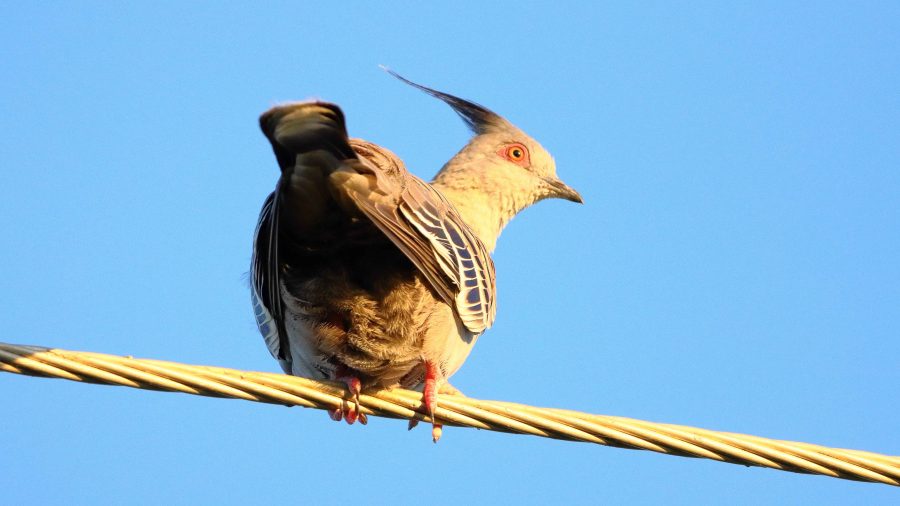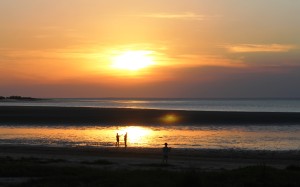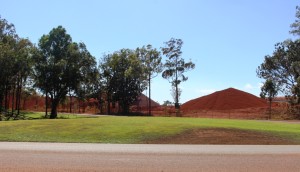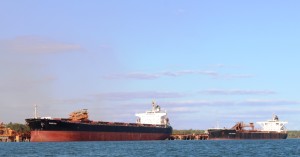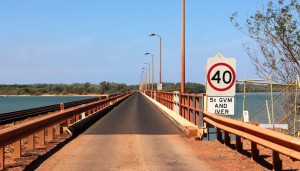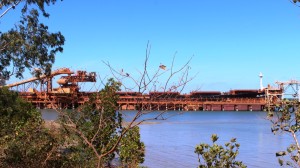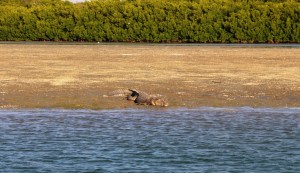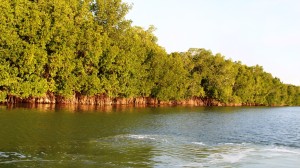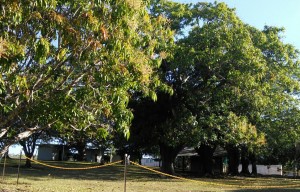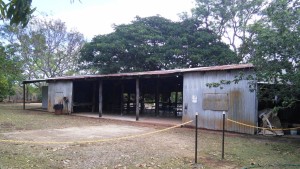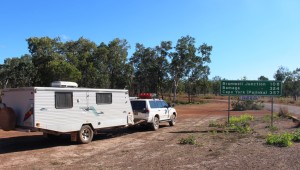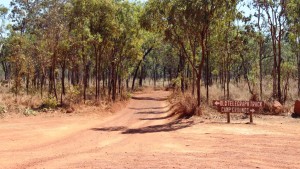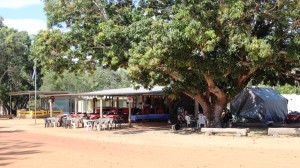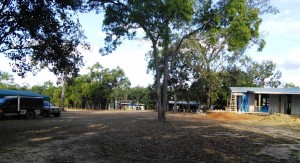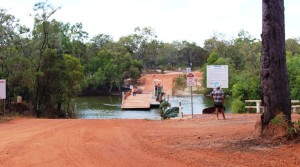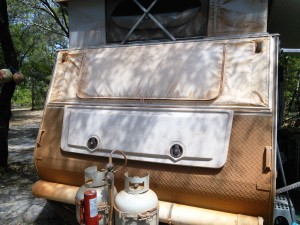Jumbo Jets & Old Machines
Note: A video link appears at the bottom of this blog post.
Over our many years of caravan travel we have passed through and stayed at Longreach many times. We have learned that if arriving from the East the first thing you will now see is the roof that shelters the aircraft at Qantas Founders Museum. The roof has not always been there. For the previous few years, the first sight was the tail of the Boeing 747. Prior to that it was probably the water tower at the roundabout, adjacent to the Longreach CBD.
Thursday 28th September was Qantas day. We had booked the Museum Tour for Ruth and I and the Aircraft Tour for me. All those steps! Then we were both booked to return in the evening for the Light Show. That left time for a nap in the afternoon.
The museum tour is confined to the original museum building and is all at ground level. It includes a Catalina Flying Boat in the grounds, a wide range of aircraft and vehicle models inside and the old workshop buildings that were the original Qantas Longreach hanger. Basically, it tells the story of the founding of Qantas and of its growth until 1934.
The story from 1934 to the era of the Jumbo Jet is told in the aircraft display, now housed under a huge canopy, a sort of hanger without walls. The Boeing 747 is so large that some of the other craft are under its wings. Three of them are accessed by permanent stairs to their side and rear doorways. The Douglas DC3 is small enough to be examined from the ground.
There are three tours of the aircraft museum. The one that I did takes visitors through the aircraft, with a very informative guide to explain what you are looking at and relate to you the history. The next is more expensive. It is for smaller groups and includes the opportunity to climb onto spaces normally only accessed by the crew and allows you to sit in the pilot’s chair and stand out on the wing for a photo. Then there is an evening sound and light show, where the Qantas story is projected onto the mostly white fuselages of the three larger aircraft.
On display is the Douglas DC3, the Lockheed L-1049 Super Constellation, The Boeing 707 and the Boeing 747 Jumbo.
The Boeing 707 is an interesting exhibit. It was purchased by Qantas and joined the international fleet. When it was retired at the end of its passenger carrying life it was acquired by a business that converted it into a five star flying hotel suite. It later became a luxury charter aircraft used on one occasion by Micheal Jackson, during a tour. It was finally retired to an open field in the south of England.
Someone connected with the museum heard about this aircraft and recognised its historical significance. It was purchased and restored to flying order by a team of volunteers who travelled to England for several months to complete the task. It then flew to Longreach to join the fledgling museum fleet. I remember when it arrived.
The light show is particularly well done. Visitors sit or stand on a concrete area between the aircraft. Seating is on high stools. Just grab one if you get tired of standing. As the program is projected onto the sides of three aircraft it is necessary to be a bit mobile.
On the morning aircraft tour, one of the tour members was a retired Qantas Boeing 747 captain, who was able to add to the information provided by the guide from his personal experience.
On Friday morning, five days after leaving home, we made an early start to head back to Ilfracombe where we turned south to Isisford. About 20 km south of Ilfracombe, at a rest stop, we drove a few hundred extra metres to an area where stone pitching had been used to retain and divert water into a dam. The work is over one hundred years old and may have been carried out by Chinese workers, although the skills were probably brought from England.
Stone pitching is building structures from natural stone without mortar to hold the stones in place. So, each stone is held in place by those around it. The structure is particularly useful in sandy soil where running water quickly washes earthen structures away.
When we were in this area back in caravanning days, we spent a couple of nights in the riverside camp at Isisford, on the Barcoo River. There was an excellent museum there with a display of the ancient forebears of the Crocodile. It had an excellent cafe /coffee shop for such a small and remote place. The cafe is in the museum building, which partly explains why it exists in such a small and remote community.
On that occasion we had morning coffee at the van before going into town. We said that it would be nice to go back. And so, we did. Sadly, some of the fossils that were on display have been moved elsewhere. Probably to another museum where more people visit.
Roadside flowers were in abundance, particularly towards Isisford. The grass is a brilliant green. The Barcoo has been in minor flood three times this year, so there is a lot of water, on its way to Lake Eyre. The Barcoo and Thompson Rivers join near Windorah to form Cooper Creek which feeds the lake, if there is enough water to travel that far.
We returned to Ilfracombe and visited the Wellshot Centre. The building was the police station in the town but was converted to a museum to display items from nearby (we passed it on the way to Isisford) Wellshot Station. Wellshot Station was one of the first stations in the area. It was developed with Scottish money and Australian know how.
Ilfracombe has a “Mile of Machinery” as a memorial to the pioneers. It stretches along the north side of the highway for most of the length of the main street. I took a walk along most of it. Included is an example of the ubiquitous Ferguson 35 tractor. I learned to drive on one.
We returned to Longreach for a pie and coffee before returning to our unit for a nap. Late afternoon we went out looking for a sunset but tonight it was rather ordinary. The sunset the previous evening looked to be a beauty, but we were occupied at the Qantas sound and light show.
In the waning afternoon light, I found some Plumed Whistling Ducks at a waterhole at the north of town. I was trying to get closer for a better shot when they took off. Above the ducks, on the power lines, some Crested Pigeons were sunning themselves and looking a bit surprised. But they just sat and didn’t move.
We returned to the cabin for our final night at Longreach. Tomorrow we are off hunting Dinosaurs.

